M. Quelque Chose
Jean Follain, Beatriz Olabarrieta, Ola Vasiljeva, Yonatan Vinitsky
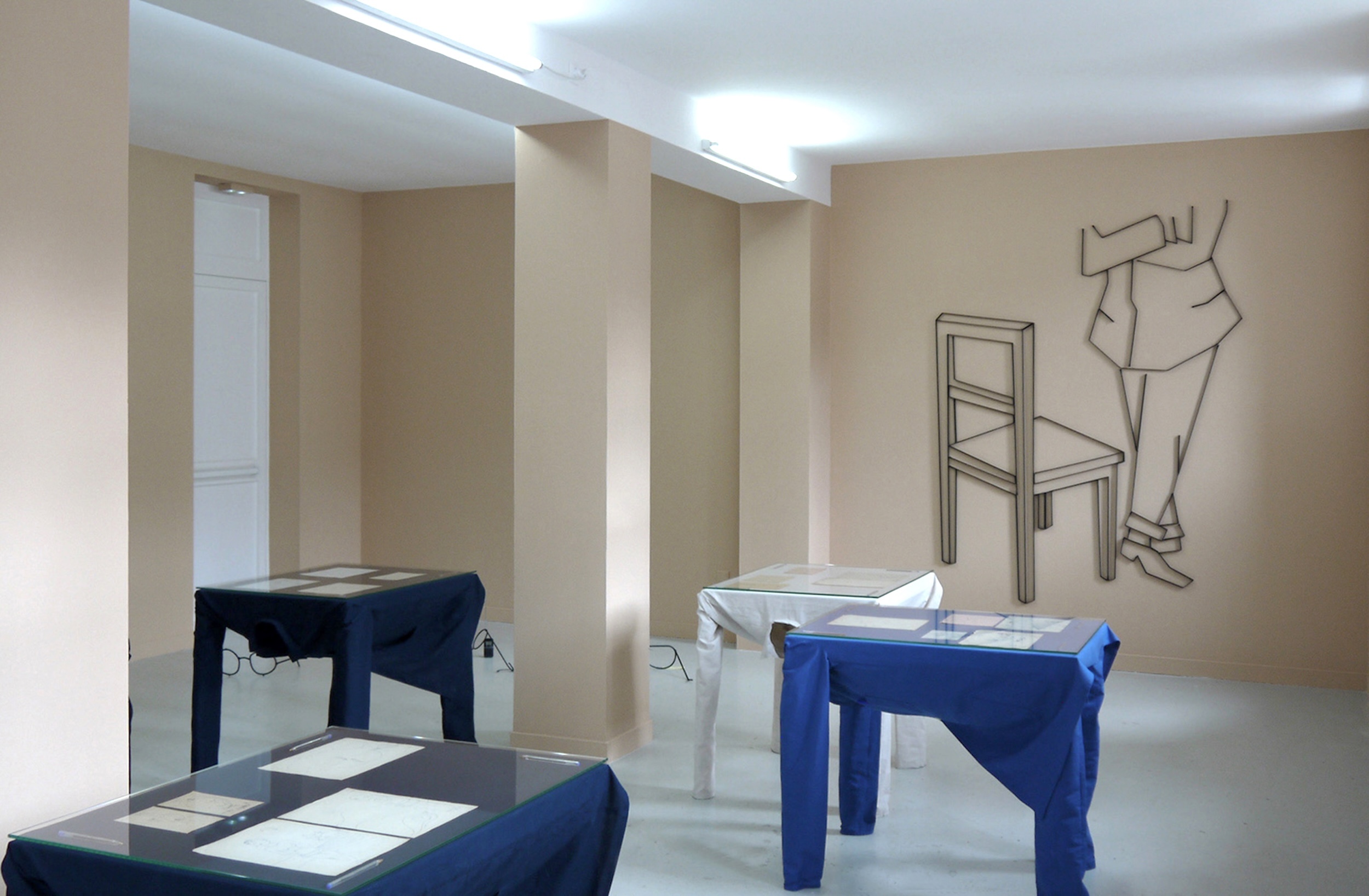
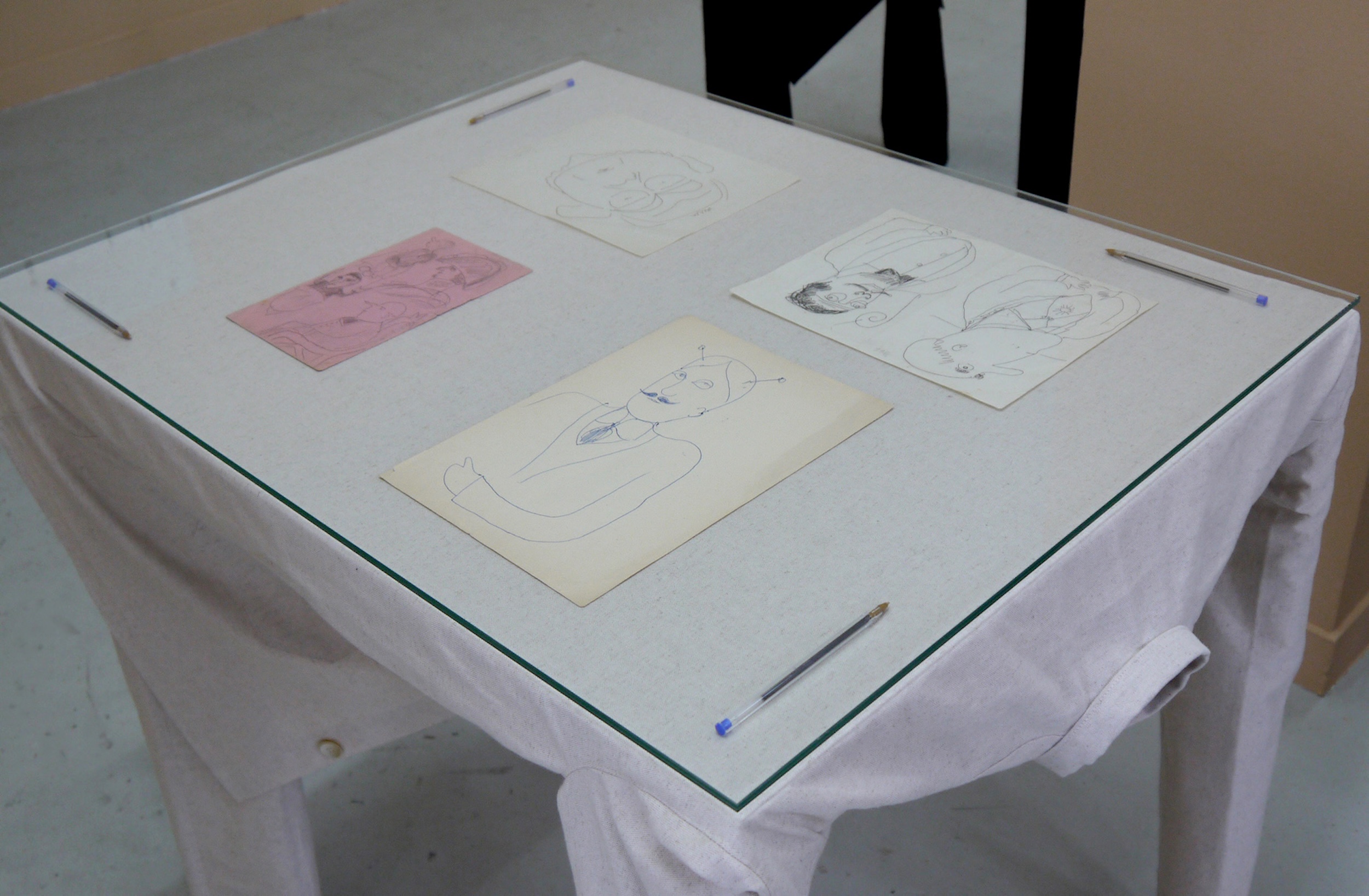
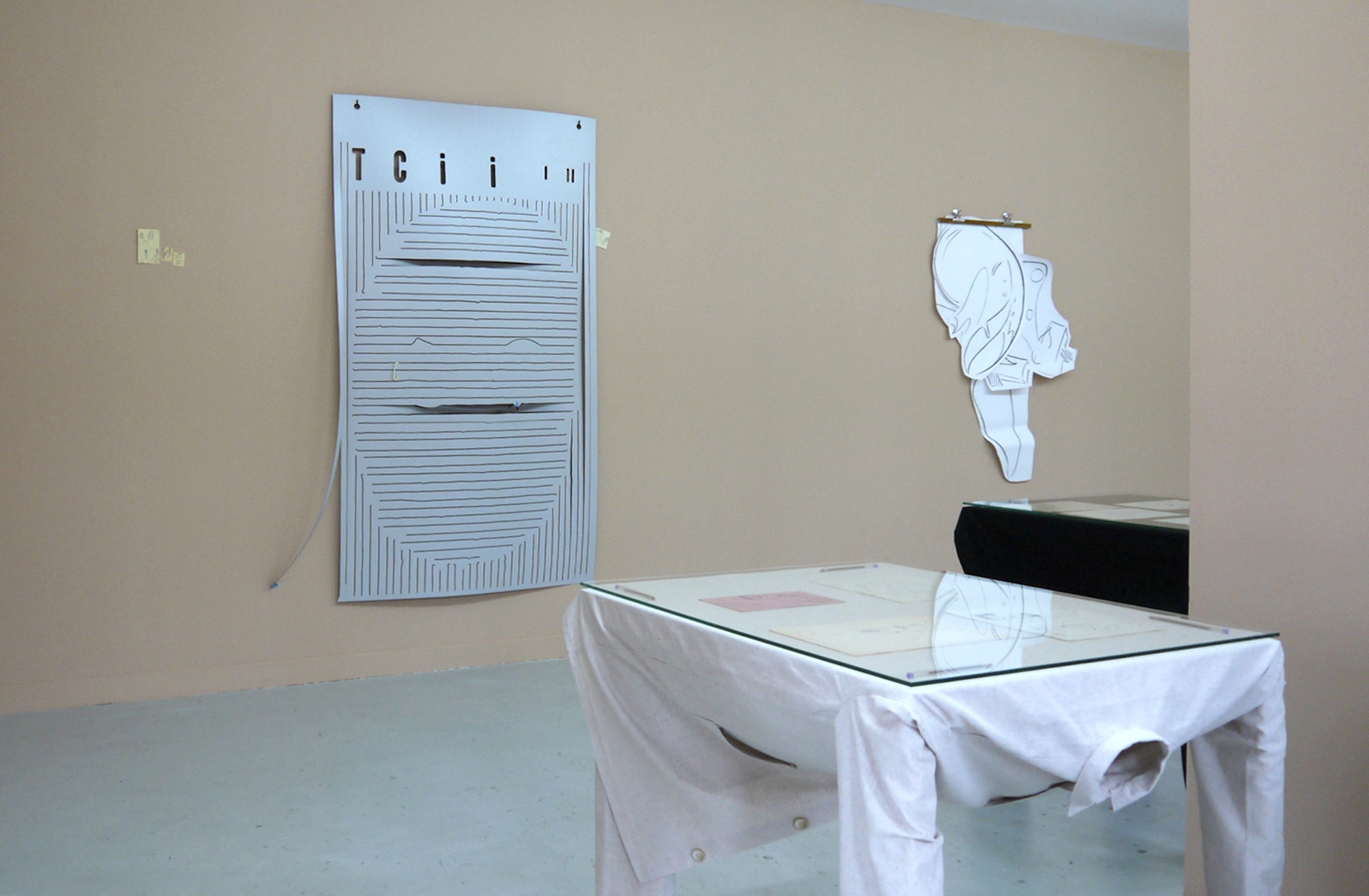
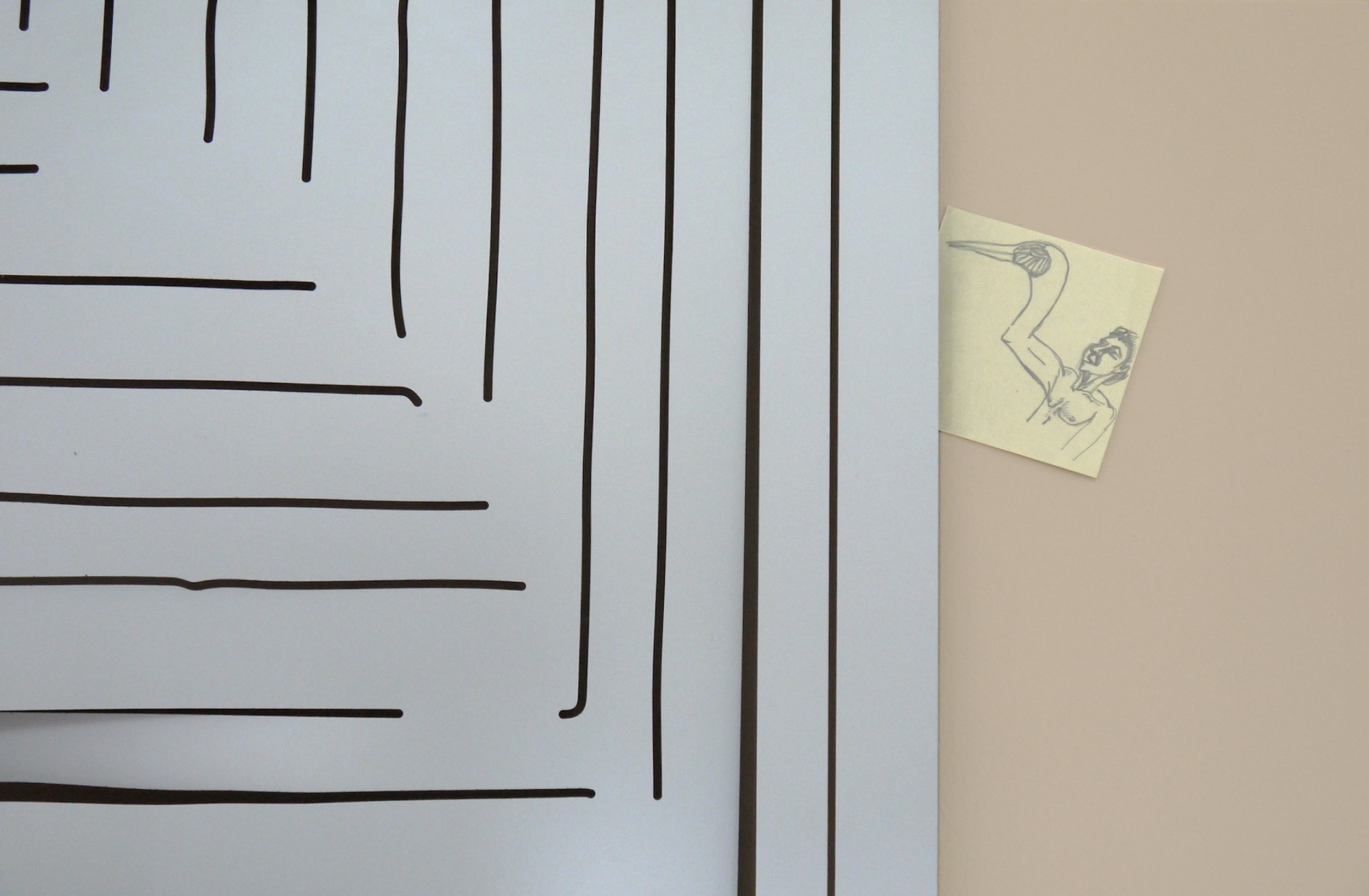
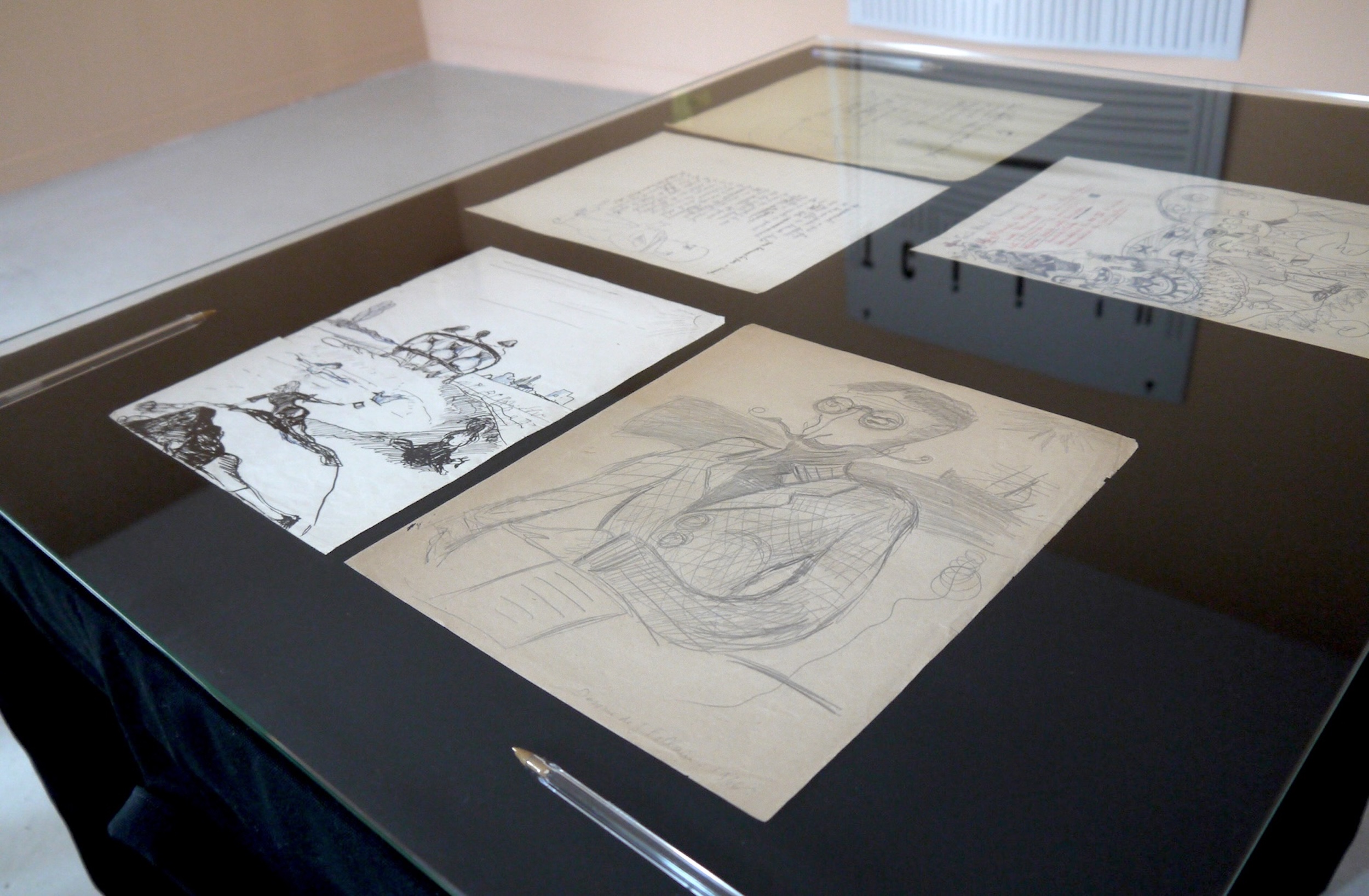
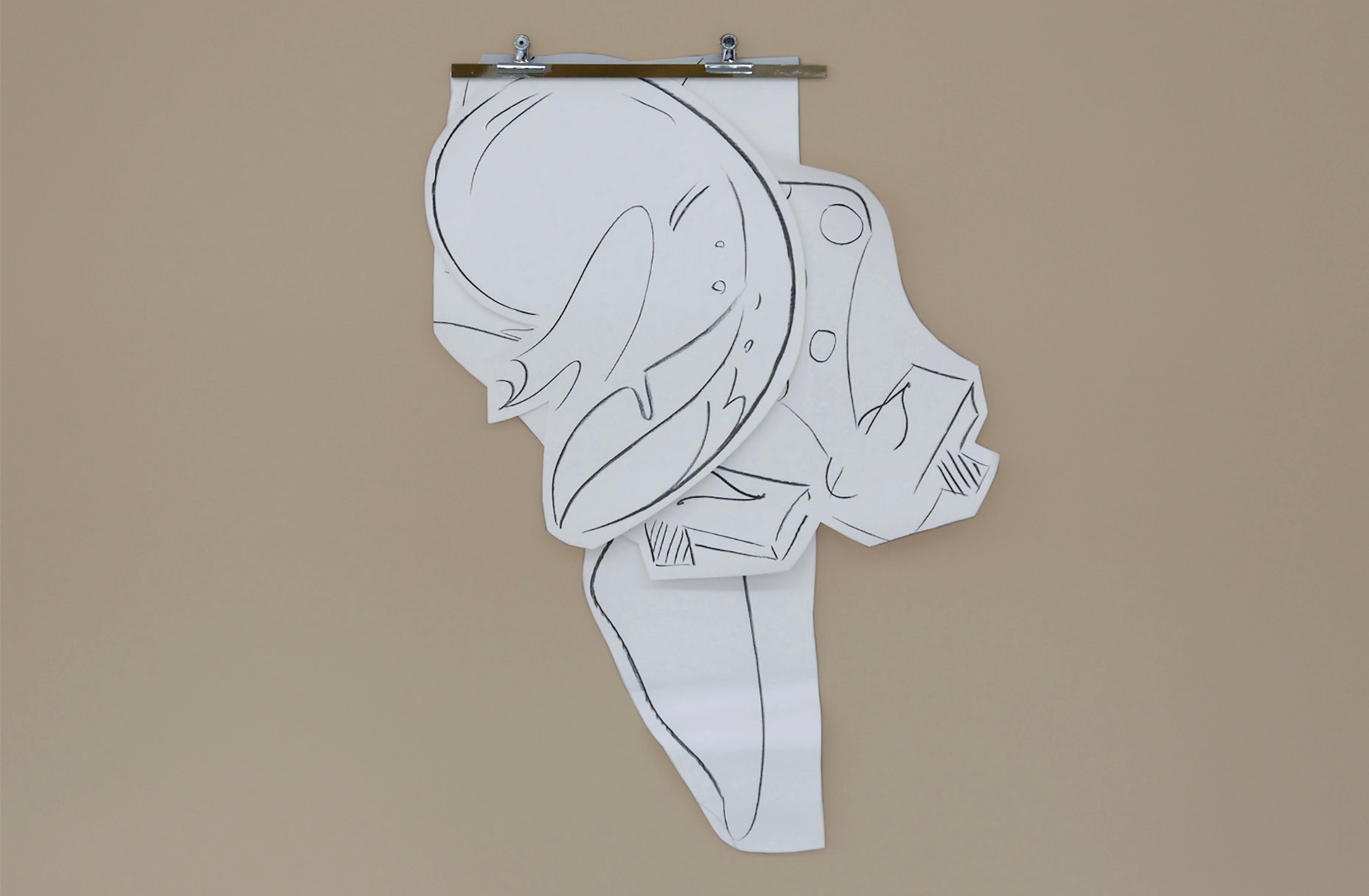
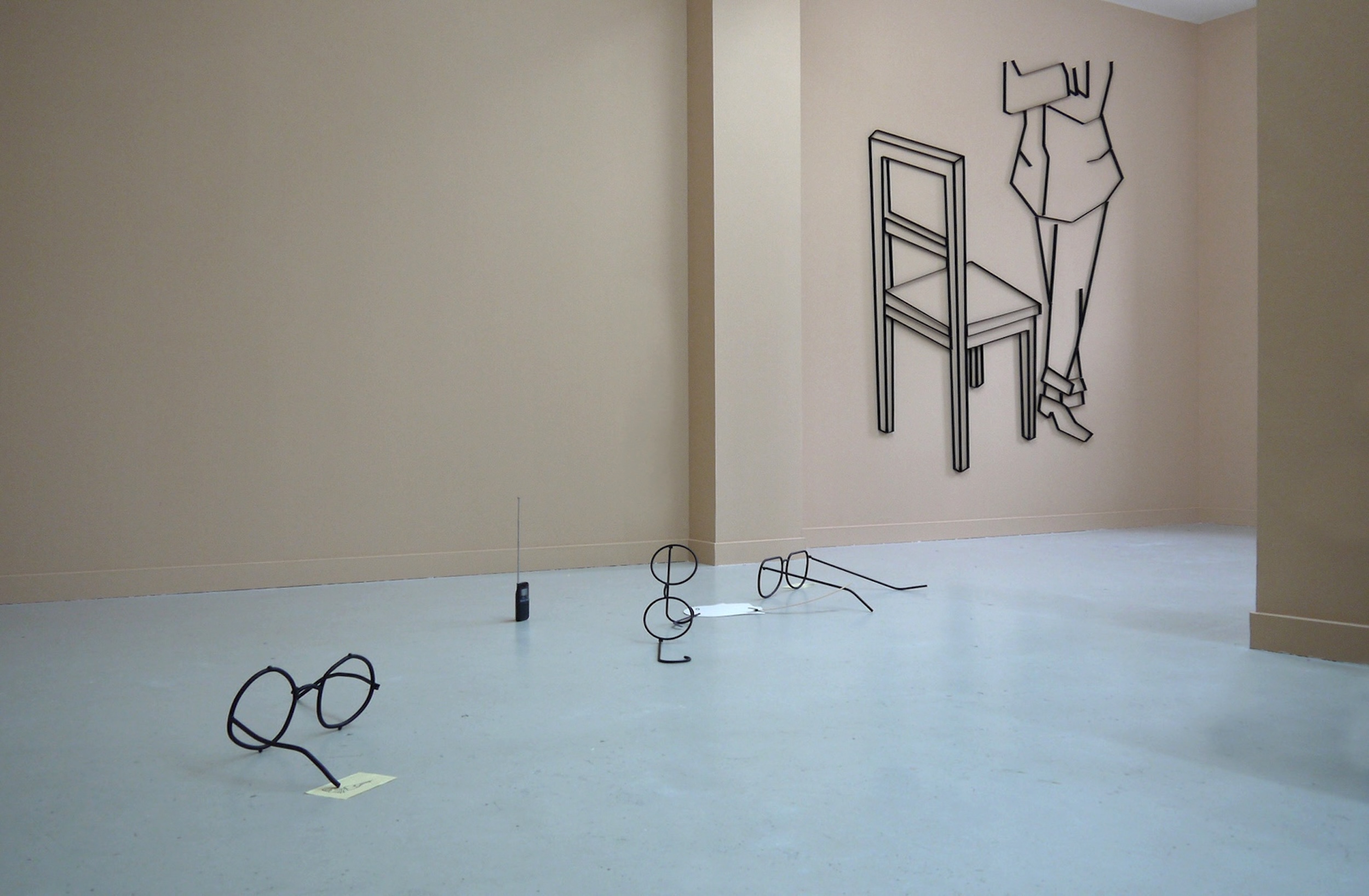
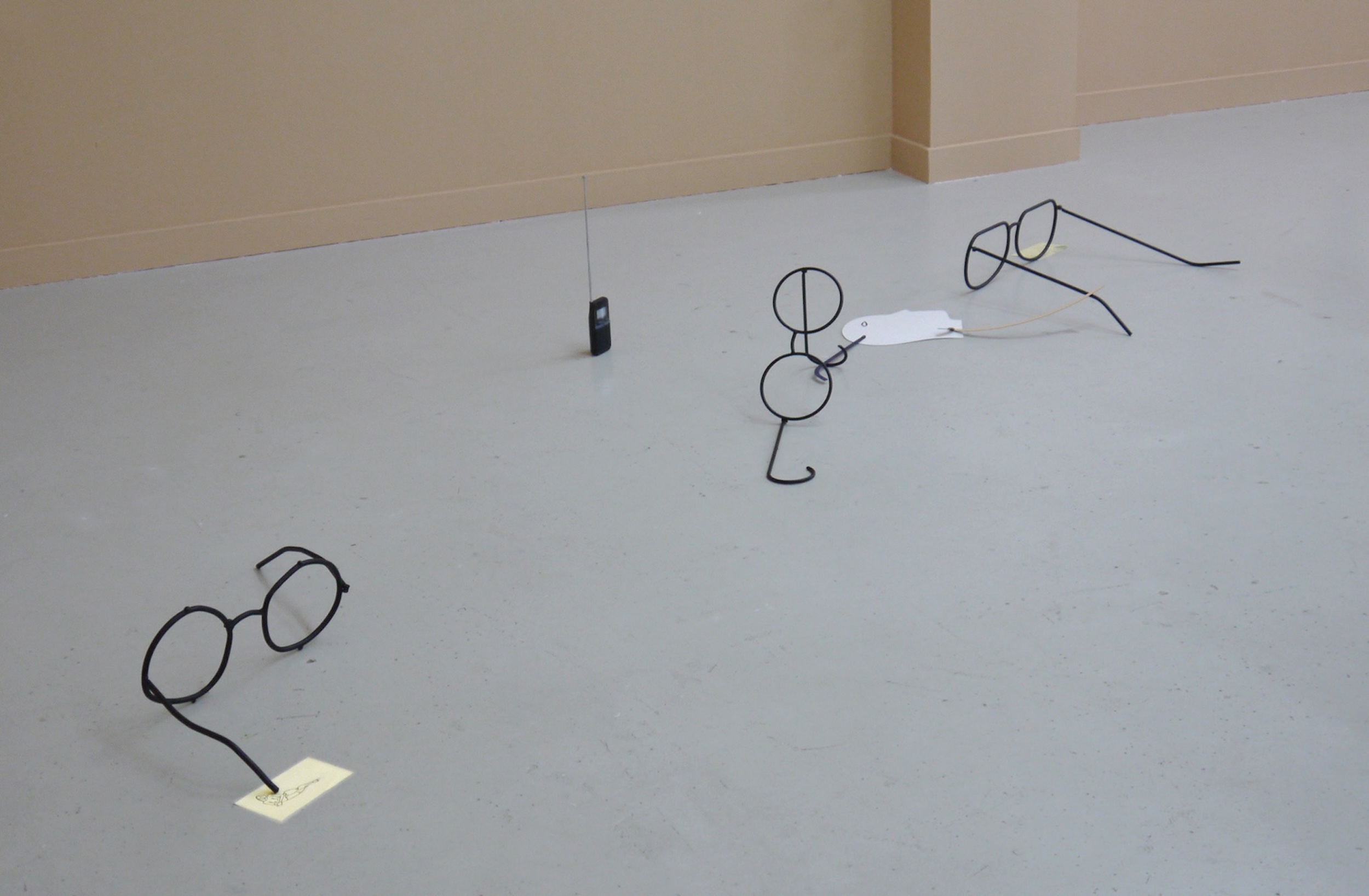
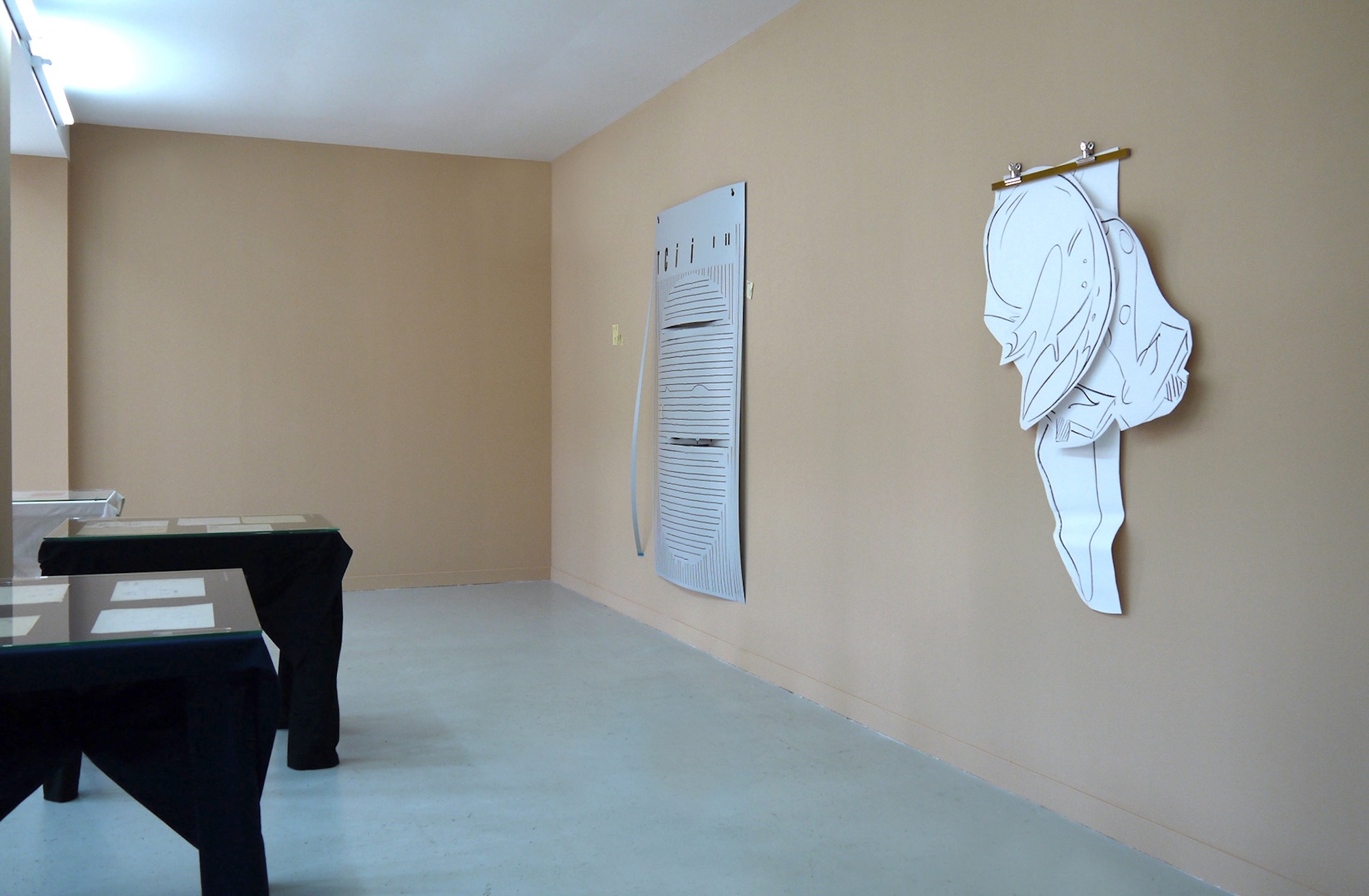
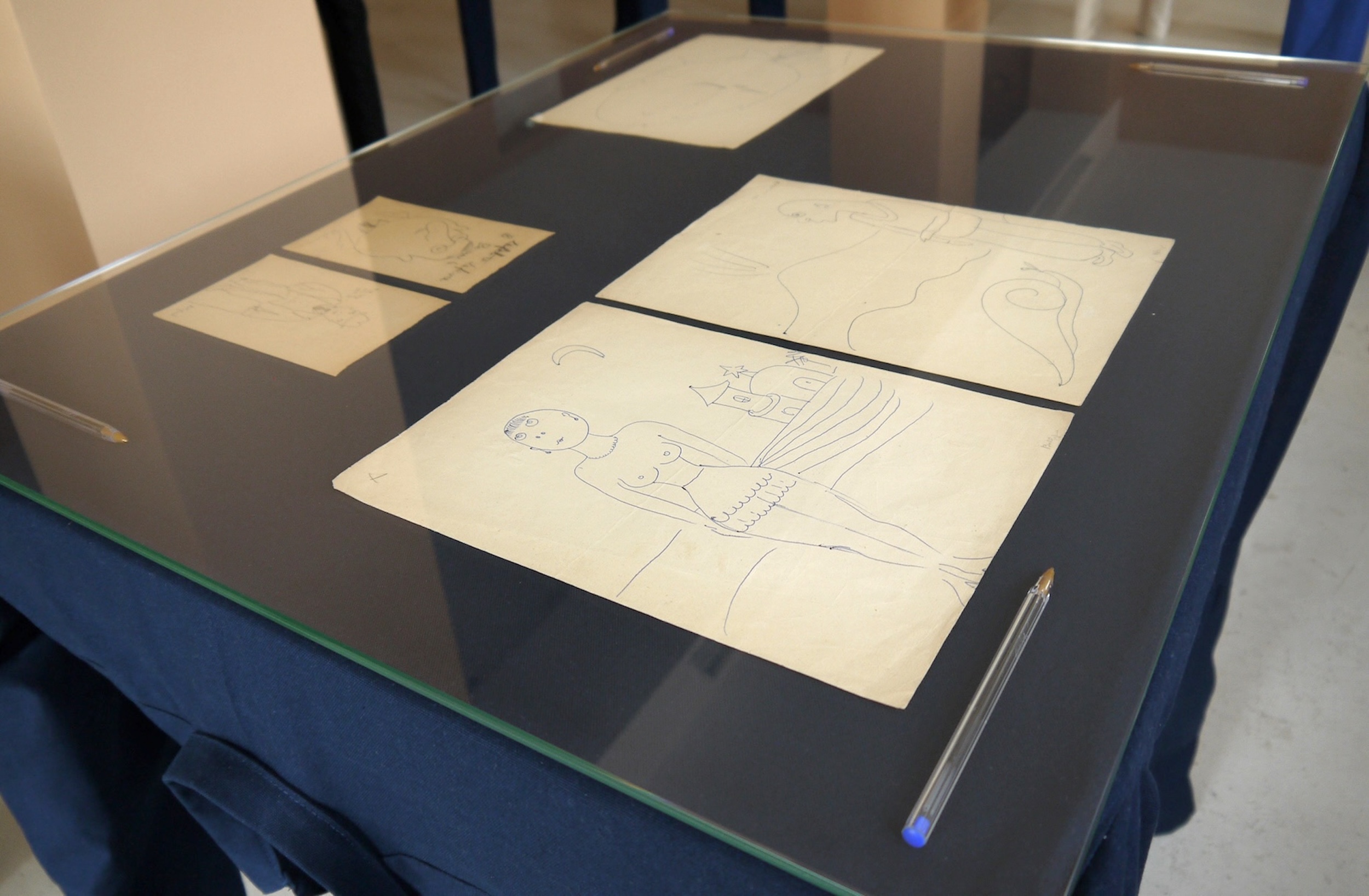
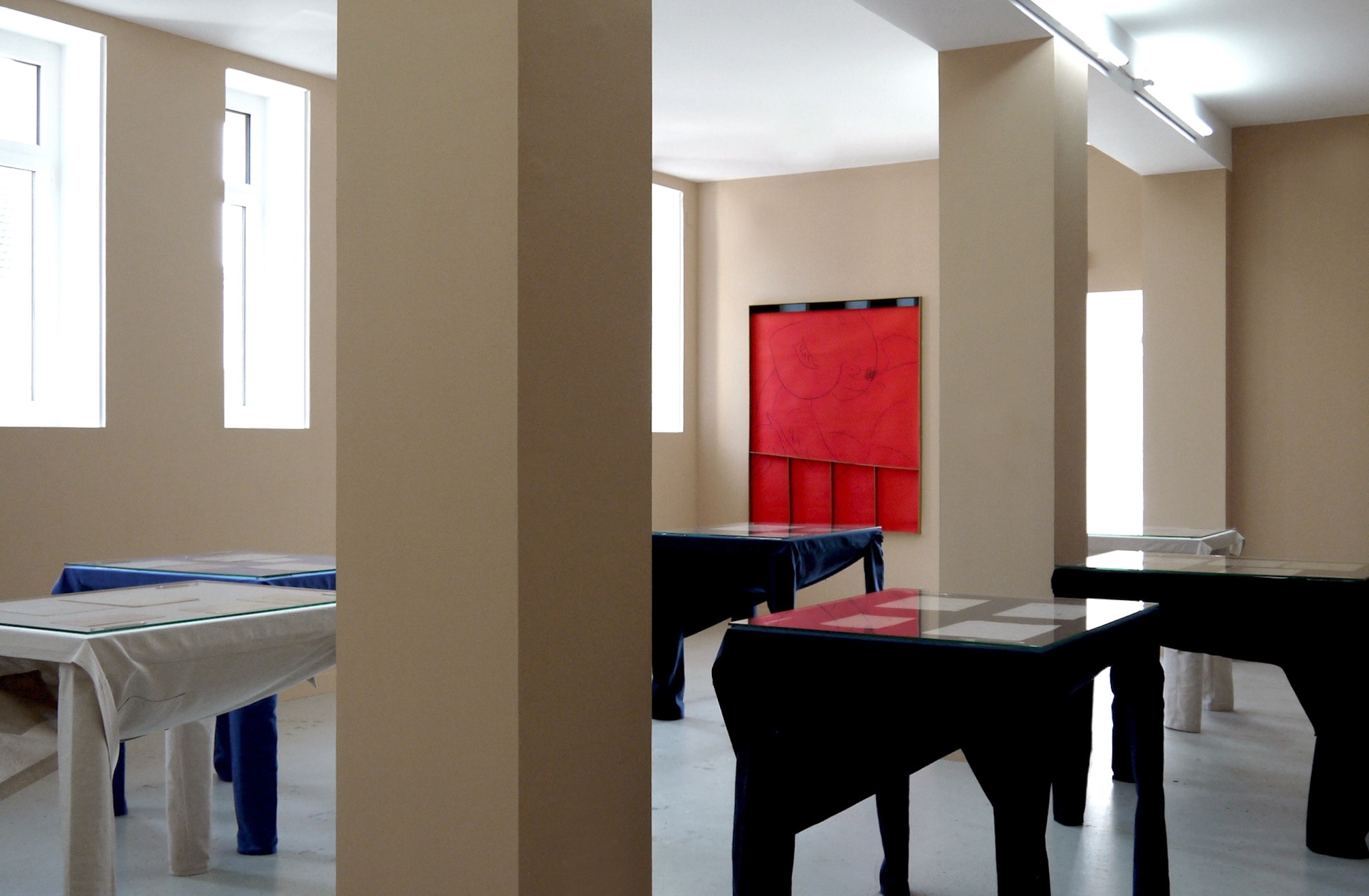
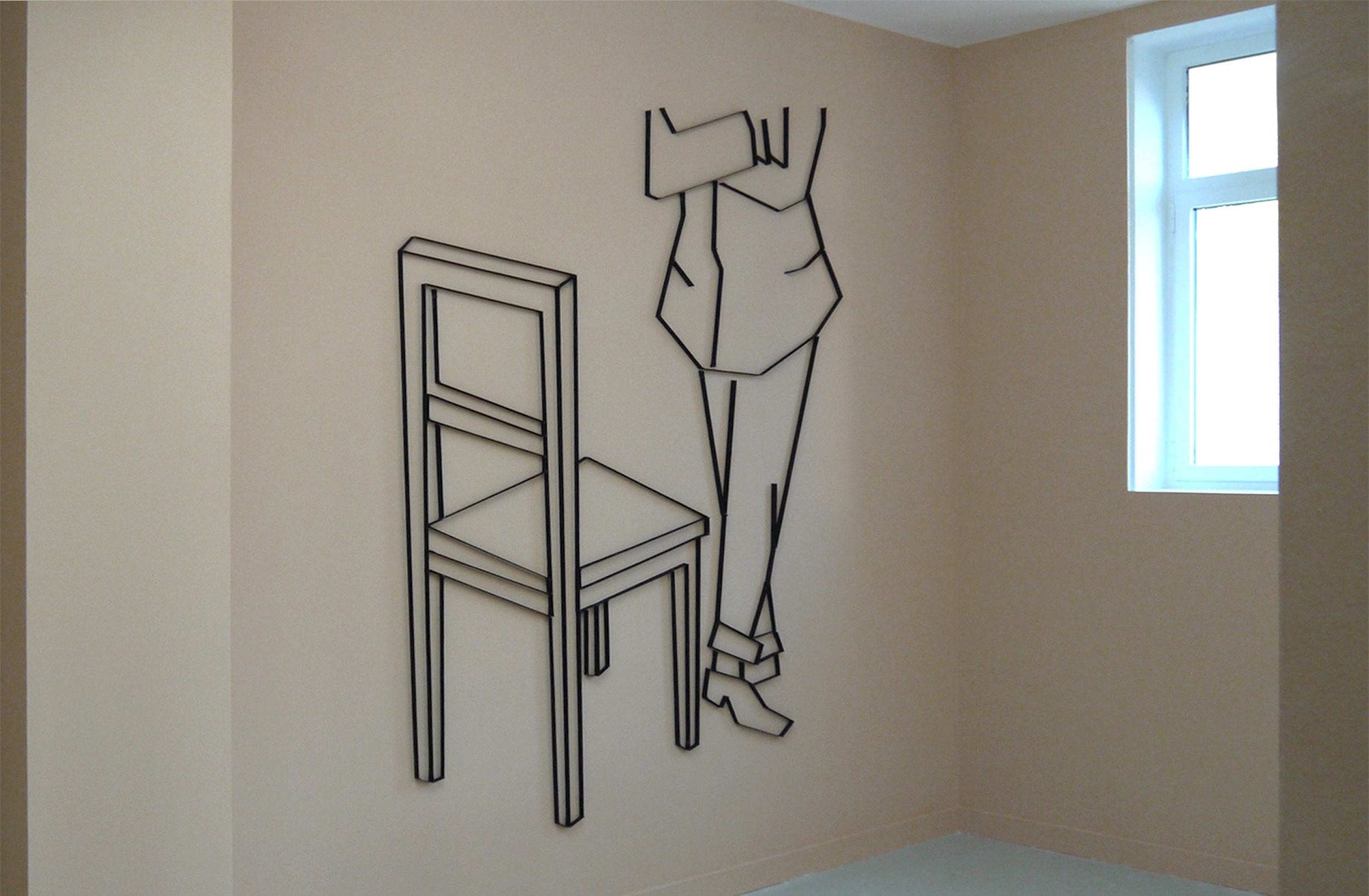
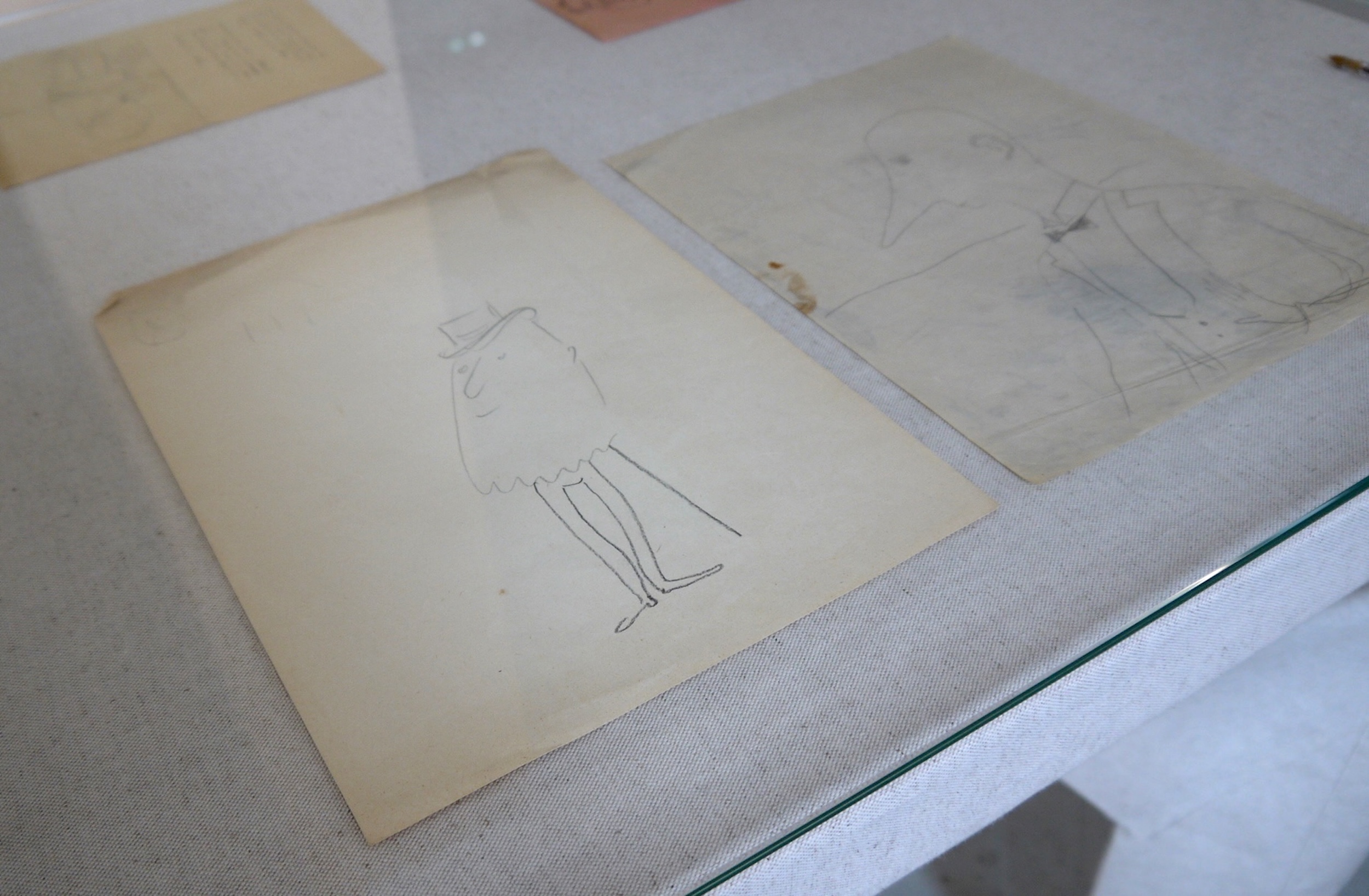
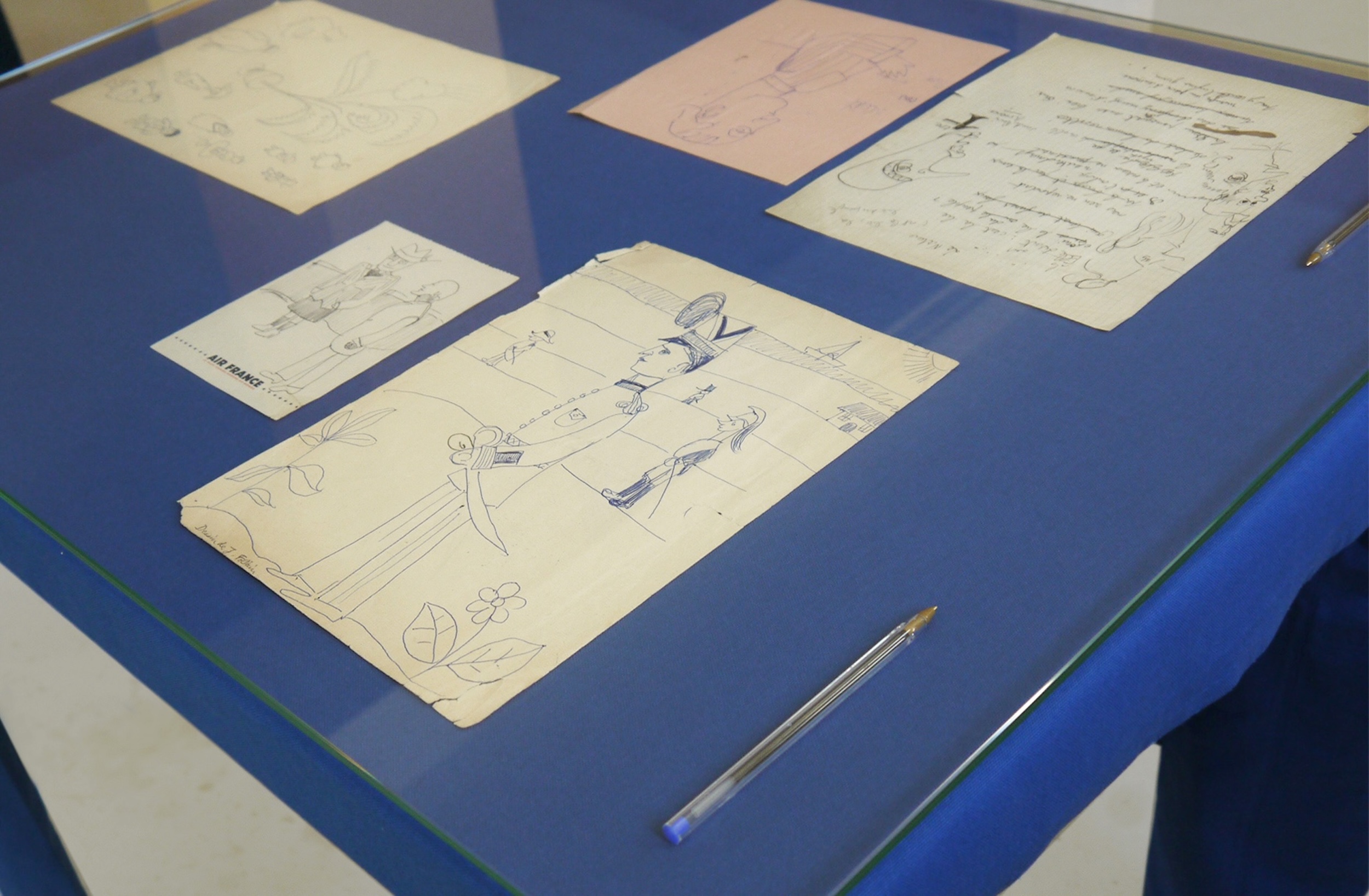
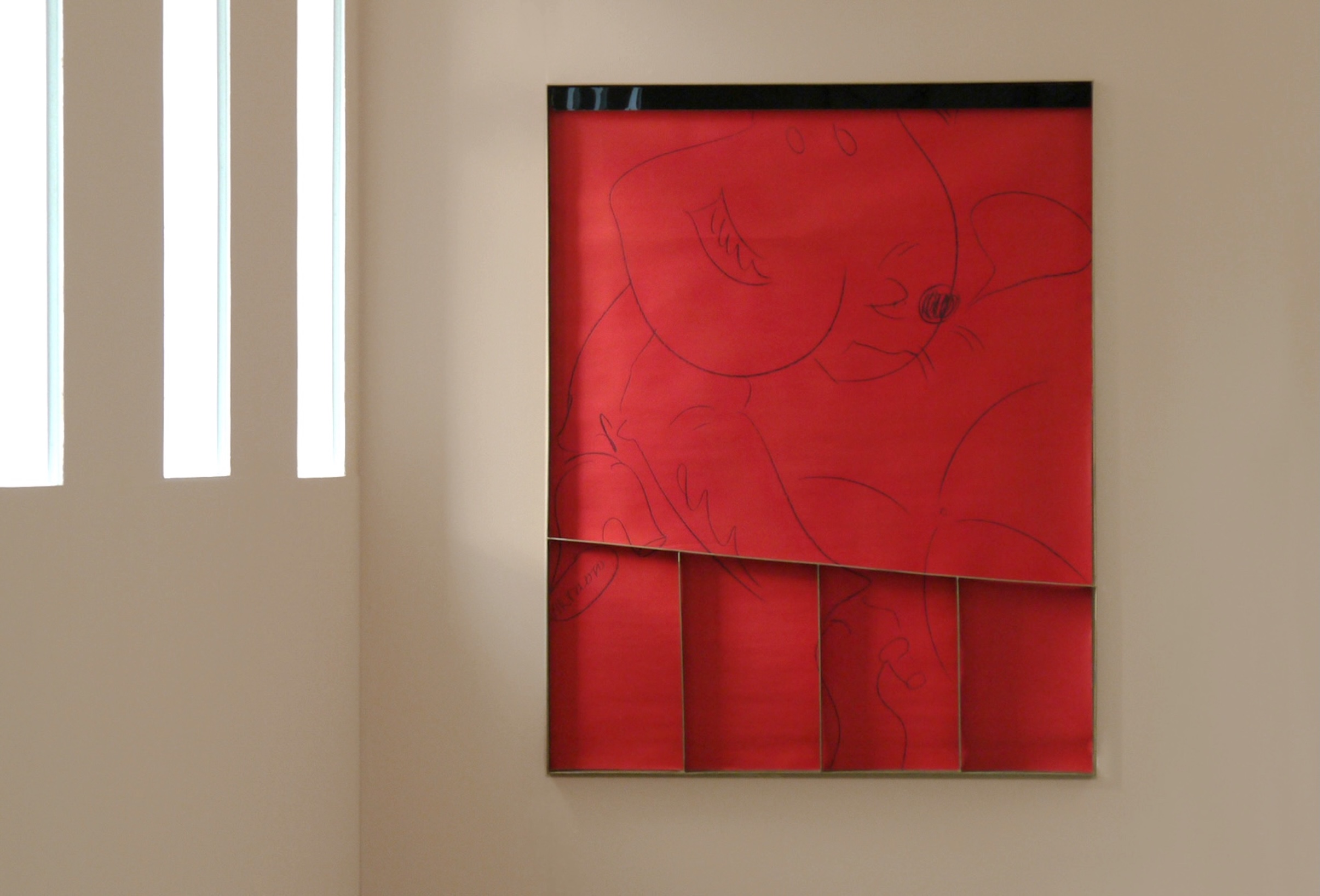
l y a quelque chose de fondamentalement normal dans les objets, les vêtements, les lieux décrits par Jean Follain dans ses poèmes ou textes en prose. Le talent du poète né en Normandie en 1903, réside dans sa façon d’écrire le réel avec humilité, sans image ni métaphore, à contretemps du surréalisme dont il est contemporain. Les écrits de Jean Follain se situent entre tradition et modernité, entre la campagne et la ville, entre Canisy, Saint-Lô et Paris. Sa poésie témoigne d’une attention de chaque instant à son environnement quotidien : La forme d’un verre, le revers d’un col, le nez en trompette du garçon de café, autant de détails ténus qui viendront éblouir l’accumulateur compulsif qu’il était.
Lors de nos recherches, nous découvrons ses manuscrits de poèmes au milieu d’autres documents d’une banalité frappante : des sous-bocks, des morceaux de nappe de bistrot, du papier à entête, pour la plupart ornés du trait libre de Jean Follain. Un homme cravaté affublé d’une paire d’antennes, des dizaines de portraits de moustachus, un escargot de compagnie, un homme portant une jupe, ces dessins de rêverie, malgré le papier jauni et corné, semblent appartenir au présent. Dans cette exposition, ces dessins réalisés dans un contexte privé seront majoritairement détachés des écrits sans pour autant être considérés comme des œuvres d’art. Présentés sur des tables évoquant leur mode d’apparition, ils pourront ainsi pour la première fois être considérés comme une pratique à part entière, appréciés pour leur qualité indéniable. Est-ce l’élégance de la plume d’un homme fréquentant de nombreux artistes ou le trait sûr du stylo à bille ne semblant pas quitter la feuille qui confèrent aux dessins de Follain cet aspect si contemporain ?
M. Quelque Chose met en regard les dessins du poète normand avec le travail de trois artistes contemporains : Beatriz Olabarrieta, Ola Vasiljeva, Yonatan Vinitsky. Ceux-ci ont d’abord en commun l’utilisation de la figure humaine comme élément vecteur de sens et d’humeur. Leurs formes modestes, suggérant des silhouettes nous attirent sans que l’on ne puisse vraiment les saisir. Tout comme Jean Follain, c’est souvent dans la littérature, les événements historiques ou le rêve que Ola Vasiljeva puise l’inspiration nécessaire à la réalisation de ses environnements complexes mêlant dessin, sculpture, objet trouvés et vidéo. Les dessins exposés ici représentent des figures humaines ou des patrons de vêtements qui flirtent avec la formes sculpturale. Les installations de Beatriz Olabarrieta évoquent une dramaturgie du quotidien et une occupation de l’espace par des figures anthropomorphes bavardes et fragmentaires. À travers une cosmologie d’objets et de formes qui se joue des contingences du présent, le trait devient alors le langage de ce que l’on peut mettre en mots. À l’origine de chaque nouveau projet de Yonatan Vinitsky il y a un objet domestique apparemment anodin, une image trouvée lors de phases de recherches, le choix d’une technique ou d’un matériaux particuliers. L’artiste porte une attention particulièrement amusée à l’histoire de l’art et les choses qui l’entourent. À force d’appropriations et de citations, il dresse ainsi son panthéon de références, piochant aussi bien dans l’histoire du Bauhaus que dans des images publicitaires, sans distinction ni hiérarchie.
Cette exposition sera l’occasion d’une rencontre inattendue entre les dessins d’ennui d’un poète normand du siècle dernier et les oeuvres contemporaines de trois artistes internationaux partageant un regard précis et poétique sur le monde qui les entoure.
———————-
Jean Follain (né en 1903 à Canisy, décédé en 1971 à Paris) s’installe à Paris en 1925 et s’inscrit au barreau en 1928. Menant une double carrière de magistrat et d’écrivain, il se lie avec les membres du groupe « Sagesse » et reçoit le Prix Mallarmé en 1939. Écrivant en dehors du surréalisme, poète de l’objet, il a contribué à forger une poésie nouvelle (Usage du temps, Exister). Il reçoit en 1970 le Grand Prix de poésie de l’Académie française.
Beatriz Olabarrieta (née en 1979 à Bilbao) vit et travaille à Berlin. Ses projets récents incluent The Only Way Out Is In, à The Sunday Painter, Londres, 2017 ; Clever To Follow Goat, chez Antoine Levi, Paris, 2017 ; Los Algoritmos Suaves (exposition de groupe curatée par Rafael Barber Cortell) au Centre Del Carme, Valencia, 2018.
Ola Vasiljeva (née en 1981 à Ventspils, Lettonie) vit et travaille aux Pays-Bas. Ses projets récents incluent Song and Love (avec Matthew Lutz-Kinoy) à Indipendenza, Rome, 2018 ; Qualcuno si è seduto sulla mia sedia, à Quartz Studio, Turin, 2018 ; The Decline of the Showpieces à la Grazer Kunstverein, 2018 ; Zefiro Torna, au Centre d’art contemporain Passerelle, Brest, 2017.
Yonatan Vinitsky (né en 1980 à Jérusalem) vit et travaille à Londres. Ses projets récents incluent After 12 comes 1, à la galerie Braverman, Tel Aviv, 2016 ; Sortie Définitive, à Mon Chéri, Brussels, 2015 ; Loose Ends, à la galerie Frutta, Rome, 2015.